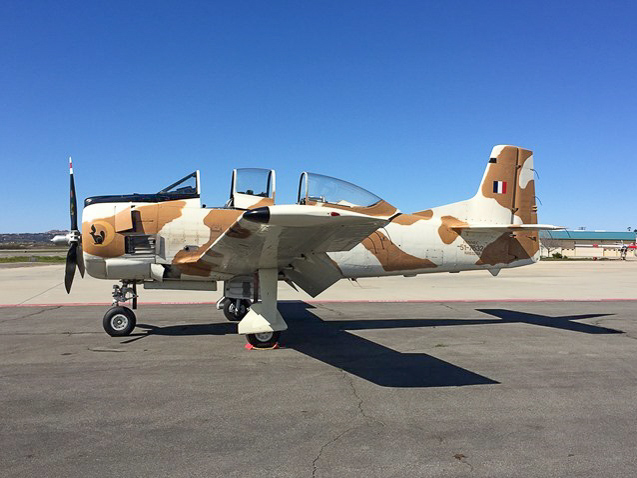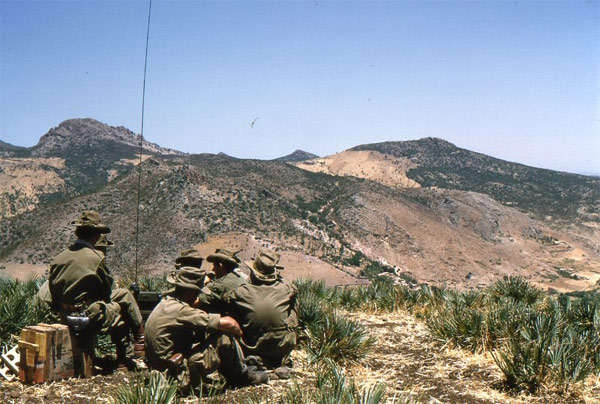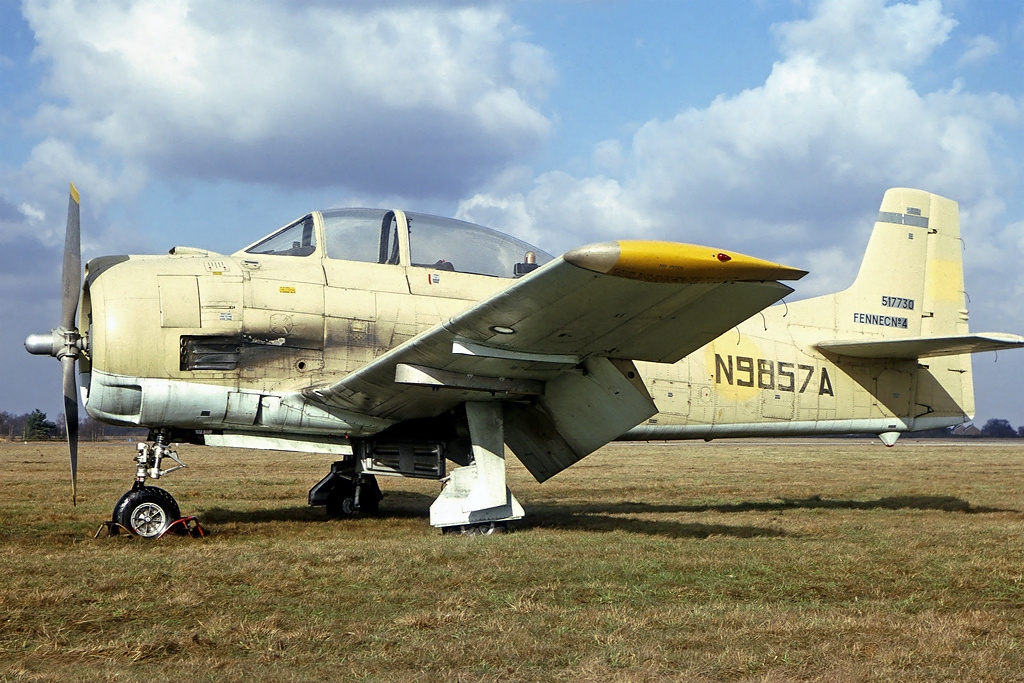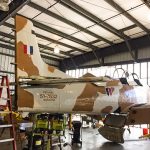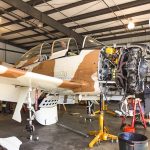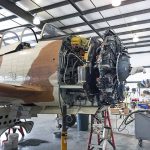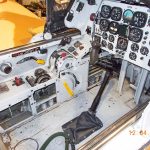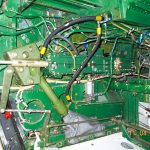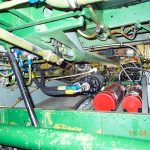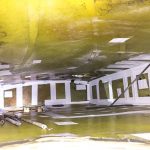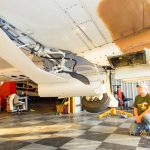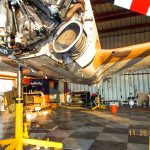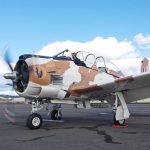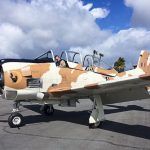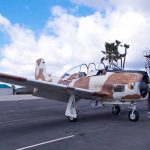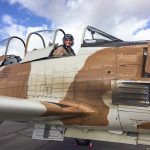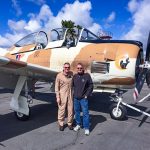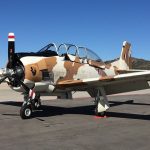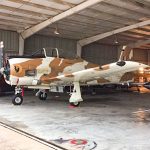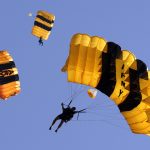The North American T-28 Trojan is one of military aviation’s truly great aircraft, both in terms of its function as originally designed, training young military pilots to fly high performance aircraft, and for its versatility; with certain airframe modifications, it became a potent Counter Insurgency (COIN) and close air support aircraft… and even a dive bomber. With this article, however, we are interested in those T-28s supplied to France under the Mutual Assistance Program.
After WWII, France was in a serious struggle to regain/retain its colonial empire. By the late 1950s, it was fighting a desperate campaign to keep its foothold in Algeria, a land which it had long considered to be French soil, rather than simply a colony. The French Air Force had been using T-6G Texans, modified with machine guns and hard points, as COIN aircraft in Algeria, but the type was ill-suited to the role, especially as it was so underpowered when weighted down with munitions. In the T-28 however, they saw a solution to their problems, … not with the U.S. Air Force T-28A variant (with its 800HP Wright R-1300), but rather the U.S. Navy’s beefier T-28B which was equipped for carrier operations, and hence had a more powerful 1425HP Wright R-1820 engine installed. However, there were no surplus T-28Bs to be had in the late 1950s, so the French acquired nearly 150 former U.S. Air Force T-28As, and had them modified with R-1820s, a three-bladed propellor, armor plating, and four wing hard points for bombs, rocket pods, and/or gun pods with twin .50 cal. machine guns.
The surplus T-28As started arriving in St.Nazaire, France during 1959. France’s Sud Aviation was responsible for carrying out the modifications, with the resultant product becoming known as the T-28S Fennec (Fennec being the French word for ‘desert fox’. Two prototypes, based upon T-28As 51-3593 and 51-3751, came first, but the type received rapid approved for production.
The first Fennec off the Sud Aviation line is the subject aircraft for this article, T-28A 51-7632. North American Aviation delivered ‘632 to the US Air Force on January 28th, 1953. She initially joined the 3580th Pilot Training Wing (Air Training Command) at Foster AFB in Victoria, Texas soon after, moving in March, 1954 to the 3307th PTS at Marana AFB in Marana, Arizona. By April, 1955 the T-28 had transferred to the 3301st PTS at Moore AFB in Mission, Texas, her final active unit within the US. Air Force, before retiring to storage at Davis-Monthan AFB in Tucson, Arizona in August, 1959. She didn’t linger in Tucson for long though, as she was soon on a boat to France for conversion in Sud Aviation’s factory.
The French Air Force, or Armée de l’Air as it is officially known, formally accepted 51-7632 in April, 1960. The Fennec was soon on its way to Algeria, where it would join the Light Support Squadron Aviation units, or Escadrilles d’Aviation Légère d’Appui (EALA) in the close air support role. Her first unit was EALA 3/09 at Telergma where her callsign became F-SFTA. She then moved to EALA 3/04 with callsign F-SFVA, although still based at Telergma. The Fennecs were heavily involved in COIN operations, but ultimately, of course, the French efforts to retain Algeria failed, and on July 3rd, 1962 the nation finally freed itself from the yoke of colonial rule.
As a result, France now had a sizable fleet of light combat aircraft that it no longer needed. Initially, the aircraft returned to France and either went into storage, or into a reserve unit. 51-7632 joined ERALA 4/37 (Escadrilles de Reserve d’Aviation Legere d’Appui) with callsign F-SDOA. However, this was a brief assignment. The French government began selling on their Fennecs in 1964, with the bulk of them going to Morocco and Argentina. 51-7632 went to Morocco, joining the newly-formed Force Aérienne Royale Marocaine, or Moroccan Air Force, in September 1965 with serial number 1 and callsign CNA-EP. The resilient combat aircraft served in Morocco for the two decades before transfer to the Fuerza Aérea Hondureña, or Honduran Air Force, on October 15th, 1977 along with seven other examples. Interestingly, this sale was brokered through the late David Tallichet’s Yesterday’s Air Force. Getting the Fennecs from Morocco to Honduras proved to be an epic task, and one of some intrigue. With a mixture of Moroccan and Honduran pilots the Fennecs traversed Spain, France, the UK, Iceland, Canada and the USA, not to mention vast stretches of the North Atlantic. Fennec No.1, our subject aircraft, departed Rabat, Morocco with the civilian registration HR-226A on July 29th, 1978, routing through Santa Maria (Spain) – Horta (Azores) – St Johns (Newfoundland, Canada) – Yarmouth (Maine?) – Freeport – Nassau (Bahamas) and finally made it to Toncontin International Airport in Tegucigalpa, Honduras on August 7th, 1978 with Captain Oscar A. Servellón Moradel and Juán Ramón Cáceres Vásquez taking turns with the flying along the way. Interestingly, while Fennec No.8 (ex-USAF T-28A 51-7844) also made it to Honduras, the remaining six ex-Moroccan Air Force Fennecs did not. Apparently, the Honduran government cancelled the letter of credit for their payment, and this left these other Fennecs stranded wherever they happened to be a the time, either Lakehurst, New Jersey, or Fort Lauderdale, Florida. Those aircraft all eventually ended up being formally imported into the USA by Tallichet’s organization, although it took some time to sort out the paperwork.
51-7632 received the identification EM 227 while in the Honduran Air Force, but the Fennec was already a tired airframe by this point, and was withdrawn from service by August 27th, 1984. The other Fennec to make it to Honduras, 51-7844, wasn’t so lucky, being written off in a crash on November 10th, 1978.
In 1986, Courtesy Aircraft bought the Fennec, along with a mixed bag of nine other Honduran T-28s, importing them back to the U.S. via ship. They arrived at the port of New Orleans in Louisiana, and were trucked the rest of the way to Courtesy’s home in Rockford, Illinois. After a period of maintenance and reassembly, the Fennec took flight again over U.S. soil in January 1987. We will now let one of her new owners, Jim Bixby, pick up the story…
Registered as N632NA, the plane passed through several owners around the US before being acquired by Bob Grondzik (Skyraider Bob) in 2000. He based the plane in Ramona CA and flew it regularly along with his A-1H Skyraider, BuNo 139606. The Fennec had its last condition inspection in December 2010, and it doesn’t appear to have flown since. It sat in a hangar at Ramona collecting dust for the next several years.
Fennec No 1 was put up for sale in late 2016, and was acquired by a partnership of owners (John Cotter, Dewey Lockwood, Martin Detloff, John Bixby and Jim Bixby) in Texas in early 2017. The plane entered the shop (Tony Wiser’s Victory Aircraft Service in Ramona CA) for an extensive condition inspection, which required quite a bit of work to bring it back to airworthy condition. The propeller, prop governor, and carburetor were sent out for inspection and overhaul, and the oxygen and fire bottles were sent out for testing. After eighteen months in the shop with slow progress, Pete Blood from Fighter Rebuilders in Chino was brought in to finish the project. The gear struts, brake master cylinders, and speed brake cylinders were refurbished along with many hydraulic, oil and fuel lines being replaced. The battery was replaced and an oil filter kit was installed. All four fuel bladders were sent out for inspection and repair. A lot of small items that had been deferred during previous inspections had to be addressed as well.
The first engine run in over two years took place on February 16th. After several more engine runs and oil screen checks, John Bixby made the first test flight on February 17th. After several more flights circling overhead Ramona and more oil screen checks, the Fennec was pronounced fit for John Bixby to take her on the long cross-country trip to her new home in Houston, Texas. The airplane ran beautifully on the journey, which took three days due to weather conditions in the Houston area. The Fennec will be appearing at various Texas air shows in the coming months.
We hope you have enjoyed reading this piece about an important variant of the T-28 Trojan. Many thanks to Jim Bixby for his contributions to the article. Jim will soon be checked out in the Fennec too, and we wish he and his friends a grand time with this beautiful aircraft in the years to come!







